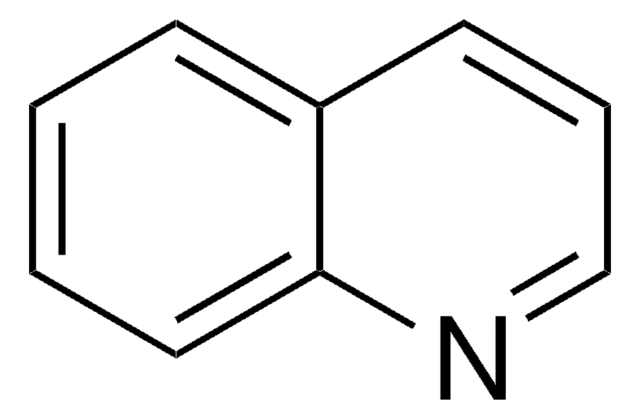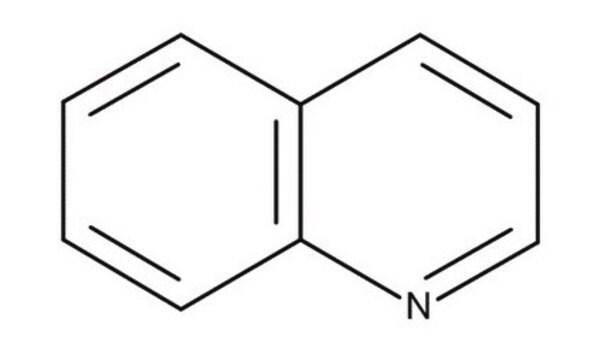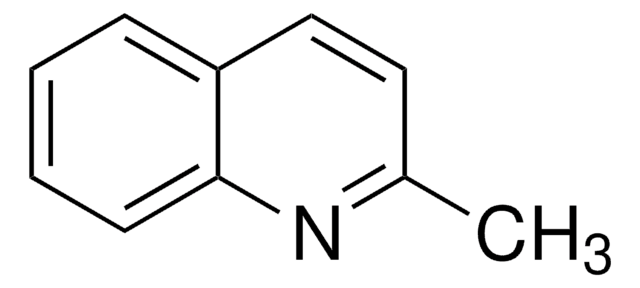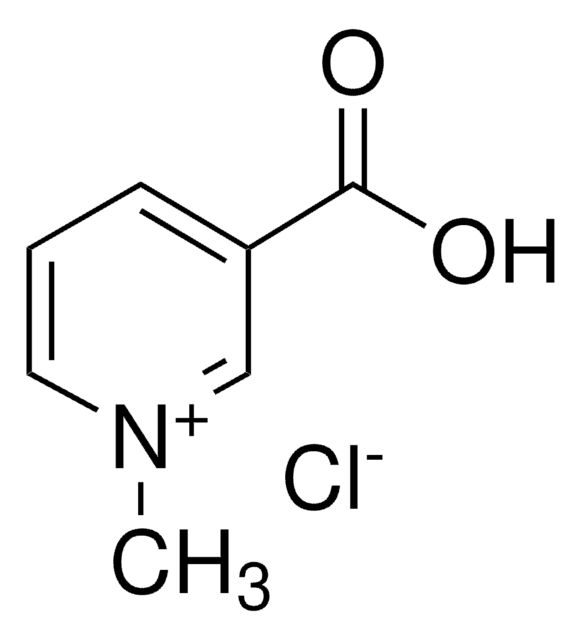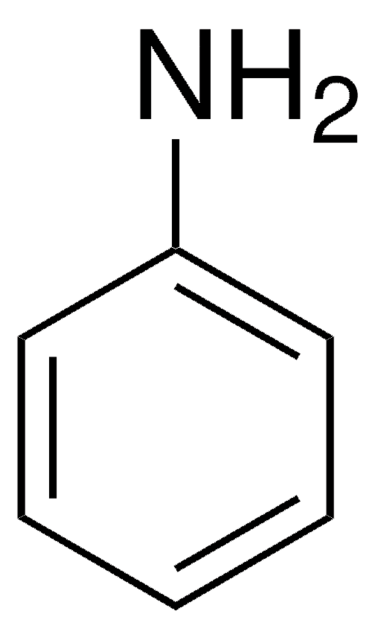Kluczowe dokumenty
94517
Quinoline
analytical standard
Synonim(y):
1-Benzazine, 2,3-Benzopyridine
About This Item
Polecane produkty
klasa czystości
analytical standard
Poziom jakości
gęstość pary
4.5 (vs air)
ciśnienie pary
0.07 mmHg ( 20 °C)
Próba
≥98.0% (GC)
97.5-102.2% (wt., NT)
temp. samozapłonu
896 °F
okres trwałości
limited shelf life, expiry date on the label
metody
HPLC: suitable
gas chromatography (GC): suitable
współczynnik refrakcji
n20/D 1.625 (lit.)
bp
113-114 °C/11 mmHg (lit.)
237 °C (lit.)
mp
−17-−13 °C (lit.)
gęstość
1.093 g/mL at 25 °C (lit.)
Zastosowanie
cleaning products
cosmetics
flavors and fragrances
food and beverages
personal care
Format
neat
ciąg SMILES
c1ccc2ncccc2c1
InChI
1S/C9H7N/c1-2-6-9-8(4-1)5-3-7-10-9/h1-7H
Klucz InChI
SMWDFEZZVXVKRB-UHFFFAOYSA-N
Szukasz podobnych produktów? Odwiedź Przewodnik dotyczący porównywania produktów
Zastosowanie
Polecane produkty
Hasło ostrzegawcze
Danger
Zwroty wskazujące rodzaj zagrożenia
Zwroty wskazujące środki ostrożności
Klasyfikacja zagrożeń
Acute Tox. 3 Oral - Acute Tox. 4 Dermal - Aquatic Chronic 2 - Carc. 1B - Eye Irrit. 2 - Muta. 2 - Skin Irrit. 2
Kod klasy składowania
6.1C - Combustible acute toxic Cat.3 / toxic compounds or compounds which causing chronic effects
Klasa zagrożenia wodnego (WGK)
WGK 2
Temperatura zapłonu (°F)
213.8 °F - closed cup
Temperatura zapłonu (°C)
101 °C - closed cup
Wykazy regulacyjne
Wykazy regulacyjne dotyczą głównie produktów chemicznych. Można w nich podawać ograniczoną liczbę informacji na temat produktów niechemicznych. Brak wpisu oznacza, że żaden ze składników nie znajduje się w wykazie. Użytkownik odpowiada za zagwarantowanie bezpiecznego i zgodnego z prawem stosowania produktu.
EU REACH Annex XVII (Restriction List)
Wybierz jedną z najnowszych wersji:
Certyfikaty analizy (CoA)
Nie widzisz odpowiedniej wersji?
Jeśli potrzebujesz konkretnej wersji, możesz wyszukać konkretny certyfikat według numeru partii lub serii.
Masz już ten produkt?
Dokumenty związane z niedawno zakupionymi produktami zostały zamieszczone w Bibliotece dokumentów.
Klienci oglądali również te produkty
Nasz zespół naukowców ma doświadczenie we wszystkich obszarach badań, w tym w naukach przyrodniczych, materiałoznawstwie, syntezie chemicznej, chromatografii, analityce i wielu innych dziedzinach.
Skontaktuj się z zespołem ds. pomocy technicznej